First Egyptian Connection
The city of Alexandria was established by Alexander the Great, and it quickly became a very important center for grain and other trade. As Alexandria gained importance as a trade center, the Ptolemies who followed Alexander began building trade relations with other nations, so that Alexandria could become the most important trade city in the world. Under Philadelphos trade relations were made with the Nabataeans of Arabia. This allowed Egypt to profit handsomely from Asian trade, and resulted in Alexandria usurping Damscus’ role as the leading merchant city of it’s time. Details of this era can be found at Nabataean Trade Routes. Philadelphos originally built ports on the Red Sea to import elephants, but very quickly expanded these ports to accommodate the new trade with India and Asia. During the reign of the Philadelphos Ptolemey, the Zenon Papyri tell us of the relations between his agents and the Nabataeans as Zenon bought various aromatics in Palestine.
Second Egyptian Connection
The later Ptolemies, especially Euergetes II was not satisfied with control of the African trade, but tried to renew the early Arabian trade policy of Philadelphos to establish direct relations between Egypt and Arabia and India. The story of the great adventurer and explorer of this time, Eudoxos of Cnidus, is characteristic in this respect. (Strabo II, e.,4ff) The first voyage of Eudoxos has been tentatively dated around 119-118 BC the second to around 111 BC. Originally an envoy to Euergetes II from Cyzicos, the great commercial city of the Marmora Sea, Eudoxos entered the service of the kings of Egypt and carried out two commercial expeditions on account of Euergetes II and his successors. On his first voyage he brought back a cargo of aromatics and precious stones. It is unclear who Eudoxos was. His name sounds Greek, but then, the Nabataeans as well as other civilizations were adopting Helenization and everyone was using Greek names. Some have suggested that perhaps he was a Nabataean, but there is no solid evidence to support this supposition.
Egyptian Inscriptions:
There are important inscriptions at Delos: a Greco-Sabaean dedication of two Minaeans to a Minaean god, second half of the second century BC; a Greek dedication of an Arab; a Delian inventory which names a certain Temallat, a Gerrhaean, about 6 BC; at Tenos at about the same time proxeny is given to a Nabataean Salamenes, son of Edemon; and someone by the name of Priene sends an embassy to Petra. (Durrbach, F.,Chois d’inscriptions de Delos avec traduction et commentaire, Paris 1921).
East Africa Connection
The efforts of archeologists are now bringing to light Greek/Roman ports along the coast of East Africa. These ports were originally established by Philadelphos Ptolemey to capture, train and import African elephants for his army. They were later used in the battle of Raphia, (217 BC, the year after Hannibal crossed the Alps) which was fought between the Ptolomies and the Selucids. The following links will provide you with some information about these ports along the East Africa coast. Since the Nabataeans were the principle maritime merchants for the Ptolomies on the Red Sea (See Who Were the Ancient Arab Traders?) we can assume that Nabataean boats were among those that visited East Africa. As excavations are currently being carried out, complete reports are not yet available.
Juani Island
For many years Ptolemy’s elephant transporting and training stations were lost to history. A recent discovery on tiny Juani Island, off the Tanzanian coast has changed all of this and now East African history is being rethought.
Felix Chami, professor of archaeology at the University of Dar es Salaam has uncovered a site on Juani Island (see map below), which he believes will substantially increase the evidence that East Africa was part of a wider Indian Ocean community. Previous to Dr. Chami’s discoveries of this and other sites on the Tanzanian coast, most scholars had never considered East Africa as part of the ancient world. The professor, however, was alerted to the existence of a cave on the Island by two local men. These men informed Peter Byrne, owner of a small lodge on Mafia Island and supporter of efforts to discover the intriguing history of these small islands - which are now entirely dependent on fishing. Unlike many of the other islands, Juani has fresh water and soil suitable for agriculture.
The two local men, who discovered the cave hacked a path through the deep jungle growth with panga knives and eventually found a collapsed coral cave around 20 meters in diameter. Scattered throughout the seven to 10-meter-high overhanging cave were shards of pottery, human bones and three skulls. Dr. Chami examined the site and described the large habitable area of soft loose soil at being at least 50 square meters. “There could be three meters of layers here to establish a cultural chronology,” he says. “This is a marvel. I believe this was a major Iron Age site. I can assure you this will change the archaeology of East Africa.” Felix Chami has now returned to the site with his team and has started a full excavation. In the past five years Dr. Chami has overturned the belief that Swahili civilization was simply the result of Indian Ocean trade networks by discovering sites along the coast that connect East Africa with Greek civilization.
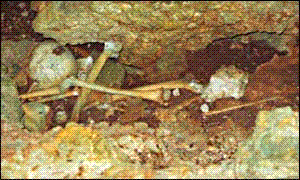
Bones in the Juani Island Cave

The island is very lush
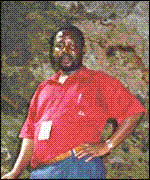
Dr. Felix Chami
We know from the Greek geographer Ptolemy (87-150 AD) that these elephant stations developed into trading stations. He described the settlements in East Africa as “metropolis” and also referred to “cave dwellers”. Ptolemy even specified a latitude eight degrees south on a large river -the location of the Rufiji river. Using this information, Dr.. Chami explored the hills above the river and found the remains of settlements with ancient trading goods and evidence of agriculture. Dr. Chami’s excavations uncovered cultural artifacts which have been carbon dated to several centuries BC. They included Greco-Roman pottery, Syrian glass vessels, Sassanian pottery from Persia and glass beads. But Felix Chami believes the new site on Juani Island may well be the most significant yet.
Recent Update:
Dr. Chami recently wrote to us with the following information:
A number of artifacts and material have been collected from another nearby cave (not the one reported above). A report on the analyses of these artifacts and other materials appears in a preliminary report published in Azania 2000 pp.208-219.
It is his belief that the island received from Egypt, and probably the Red Sea the following trade items:
- marl clay vessels
- Indian pottery of the Early Iron Age
- glass eye beads probably from Alexandria, Petra or Greece
- other beads probably from India.
Dr. Chami also reported that they now know that these people had domesticated dogs and chicken. Archaeologists had previously thought that the domesticated animals had reached Sub-Saharan Africa in the end of the first millennium AD.
The analyses were conducted in Uppsala, Nairobi, Dar-es-Salaam, Johannesburg, and carbon fourteen analysis in Pretoria. The dates are of around 800-1200 BC, but some of the materials collected dates all the way to the BC/AD changeover. Other involved scholars in the analyses include Prof. Paul Sinclair (Uppsala) and Dr. Sunil Gupta (India) and Prof. Nordstrom (Uppsala).
Dr. Chami’s report appears in the Journal des Africanistes (2002, 72⁄2). This report discusses aspects of the links between the Red Sea and East Africa.
A SHORT HISTORY OF MAFIA ISLAND
by Peter Byrne
The Periplus of the Erythraean Sea, (Indian Ocean) written in approximately AD50 (1) , describes a well established trade route, linking Arabia with Azania, as the east coast of Africa was known in the Graeco-Roman era. The principal port of trade was Mocha (or Merku and Mark’a) in present day Yemen, and the last port in Azania was Rhapta, lying some two courses (a sailing measure, possibly tacks) from the island of Menouthesias, itself 300 stadia - a measure of distance equivalent to about 50 km - from the coast. Menouthesias was “…a low island covered with trees in which are rivers…”. according to the Periplus. And Rhapta lay to the south “…beside and to the east of a cape with a river…” according to a separate source, Ptolemy (2) , in his famous Geographia. The locations of both Menouthesias and Rhapta have confounded scholars since the Periplus was first translated in 1912. Some scholars argue that Zanzibar or Pemba may be the fabled Menouthesias with Rhapta somwehere between Bagamoyo and Dar es Salaam.
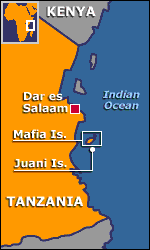
Mafia Island
The trade links to Mocha indicate that the Sabaeans, ancestors of the Yemenis, claimed ancient right to overlordship of the Azania coast, although this is believed to have been an arrangement to reduce trade competition rather than the result of conquest. Rhapta and its hinterland was governed, undoubtedly tenuously, by these people, believed to be the Ma’afir, a tribe of Himyaritic stock. The control from the Ma’afir may explain the name of “Mafia”. (3)
It is not too fanciful to suggest that Mafia is the Menouthesias of the ancients and Rhapta was in the area of Kilwa. Ptolemy located Rhapta at 8o South (where the Delta lies) and “…near a big river…”; these geographical descriptions and the mention of many crocodiles in the old writings certainly support the possibility of the Rufiji Delta as Cape Rhapton. The respected archaeologist Neville Chittick believed this was possible and at his death in 1984 was investigating the Rufiji Delta for evidence of the lost metropolis of Rhapta.
A Persian family, apparently from the town of Shiraz in Persia, led by Ali ibn Sultan al Husayn ben Ali settled in Kilwa in AD975. The Kilwa Chronicle states that he purchased Kilwa from the ruling chief for a great quantity of cloth (sufficient to encircle the island !). Bashat, one of his seven sons, settled in Mafia to govern under this new Kilwa Sultanate and he is thought to have established the towns of Kua and possibly Kisimani Mafia. Chittick dated the ruins there to the early 11th Century.
Kilwa prospered from the gold and ivory trades, tariffs on cargoes, and as a source of pitch and resin as it is a convenient port for victualling and re-caulking ships. Here the literature is vague: Did Kilwa already exist as a significant port (Rhapta)? How did this new settler from Shiraz assume such economic and political power so quickly? It is hard to believe that Kilwa was not already prosperous and therefore attractive to the Persians, who stepped into or complemented an economic and power vacuum, possibly because the Yemenis were itinerant trader-sailors and did not settle (4) . It is certainly an exceptionally good port for a sailor, with an entrance that is easily negotiated and a superb protected anchorage in deep water
Evidence for the period AD300-700 is still unclear except that there was an apparent rise in native military and political power, undoubtedly based on economic strength as a mutual trading partner.
The ‘Swahili Period’ is now identified as AD1200-1500 when relations between the Middle East and Azania appear to have been very good and peaceful with much prosperity ensuing, the latter indicated by the proliferation of trade goods dating from this period. The Swahili culture was predominantly Muslim (5) although the southward spread of Islam was slow between the 10th and 12th Centuries, and there was for that period a clear divide at Malindi (Kenya) between the Islamic north (Swahili) and the land of Zinj (6), to the south. Interestingly there is no mention of slavery and a slave trade in the writings of this period.
Construction of buildings using limestone dates from the 10th Century and the use of beautiful Persian monochrome and Chinese bowls to decorate mosques and homes began in the 12th century (and is still used in hotels and private homes in Zanzibar as an attractive decorative feature).
Trade and exploration must have been extremely active for, by the 12th Century, Arab and Chinese explorers knew even of great areas of the interior, including the great lakes that were the focus of European exploration 600 years later.
There is growing evidence that the emergence of the Swahili culture may have originated in the central Tanzanian coast, in the area of the present Rufiji delta, where archaeologists have found sites of continuous occupation from the last centuries BC to the 12th Century. This area is now believed to be the crucible of the ancient (First Millenium) civilization, the earliest being the Triangular Iron Ware. The proximity of great herds of elephant for ivory, hippo for fat (used for boats) and mangrove poles for export to the Gulf could have been economic bases. Later sea level changes, sedimentation of the river mouth (leading to extensive mangrove development), salt incursions into groundwater, the spread of malaria, filaria and leprosy could have contributed to the decline of these towns.
Kilwa became the most prominent port in the trade of the Indian Ocean by the 14th Century, although it was in decline by the arrival of the first Europeans. The rise of Kilwa and its great influence from the 11th through 13th Centuries coincided with the early spread of Islam to eastern Africa and very active trade, especially after the 10th Century. During this process Mafia played an important albeit supporting economic role.
There are Early Iron Working sites on Mafia from BC300-AD300 that have produced Graeco-Roman beads, glassware and pottery from the Mediterranean World. It is now believed that there was contact between Azania and Arabia from well before Christ, with Phoenicians, Egyptians (a BC600 expedition sent by Pharaoh Necho) and Ethiopians. The Indonesians reached Madagascar 1500 years ago.
There is clear evidence in Mafia of contacts in the Graeco-Roman period from about BC200. Early writers (e.g. Pliny and the Periplus) describe cave-dwellers and our exciting finds on Juani Island in the last two years may be a link with this period. All of the trade goods from that period are represented in the sites and we now have skeletons that can be dated and ethnic origin determined from bone samples. Rome controlled the Red Sea and the Azania trade at this time, but like the Portuguese conquerors much later, their role was tenuous and could not compete with the Bantu-Arab links already in place, including inter-marriage.
The inhabitants of Mafia are recorded in the Kilwa Chronicle as the Mwera, who were ruled from SongoSongo Island by Muslim settlers prior to the arrival of Bashat. Who these rulers were we do not know, and what of the first 1,000 years AD ? Who were the people and what was the government of Mafia ? Dr. Chami of the University of Dar es Salaam believes that the first settlers were Early Iron Working and farming Bantu (7) people , who crossed from the mainland and settled the islands, probably for their marine and forest resources. This culture was followed by a later native culture recognised as Triangular Iron Ware, which was extant with the settlement and domination from Arabia.
The Portuguese arrived in April 1498, when Vasco da Gama first sighted Mafia off to starboard on his way northwards, but the first Viceroy did not arrive to establish control and depose Arab rule until 1505. Portugal formally annexed the east coast of Africa in 1515 after the Papal bull of 1514 divided the known World between the warring Portugal and Spain. Portuguese control in Azania was always erratic and brutal and tenuous, at best, in Mafia.
In 1588 Kilwa was sacked by an African army of cannibals referred to as “Zimba” or “Muzimbe”, believed to be from central Africa (other literature sources suggest somewhere in southern Africa). This put an end to the remainder of Kilwa’s declining supremacy as a trading port and to its control over Mafia, for the cannibals literally devoured the inhabitants (8). From this time Zanzibar became the epicentre of trade in Azania, especially with the rise of power of the Omani Arabs.
Control of Mafia changed hands frequently in the 16th and 17th Centuries, as Portugal’s fortunes declined, Oman’s interest waxed and waned, and the influence of other world powers played their part, The defeat of the Portuguese by Oman in Mombasa in 1698 ended what had been a troubled and cruel Portuguese rule and gave the Sultan of Oman control of the coast from Lamu to Kilwa.
In 1829 the town of Kua on Juani Island was destroyed by Sakalava cannibals from Madagascar and in 1872 the remarkable town of Kisimani Mafia was lost in a cyclone. By then the seat of power had moved to Chole Island, a more convenient and productive location. The arrival of the Sakalava prompted the Sultan of Zanzibar to send a punitive expedition that included some of his personal Baluchi regiment. Descendents of these Pakistani people are still to be found settled mainly in the area of Kitoni near Kismani Mafia. There is also evidence for minor settlement of Mafia by Madagascans, Chinese, Malay and Indonesian peoples (who first settled in Madagascar about 1,500 years ago). Pottery and coins indicate trade took place from, at latest, the 8th Century and our new finds may help to prove Dr Chami’s theories of a much earlier active trade.
Under a treaty in 1890 Germany took control of Mafia and in 1892 the first German Resident arrived and constructed the buildings still evident on Chole. Germany paid Sultan Syed Ali ben Saad of Oman DM 4 million for Mafia and part of the mainland coast. In January 1915 Mafia was taken by British troops as a base for the air and sea assault on the cruiser Konigsberg. It was not until late 1922 that control of Mafia passed from Zanzibar to Tanganyika Territory, ending the martial law of World War I.
The population of Mafia was 33,000 at the last census in 1988 and is now thought to exceed 40,000 persons, located in fishing and farming villages and homesteads all over the main island, and Jibondo, Juani and Chole islands. Mafia is now part of the Coast Province of the Republic of Tanzania and is governed from the mainland (not Zanzibar) and Tanzania’s first marine park stretches from north of Chole Bay around to the town of Kilindoni.
Today the farmers on Mafia are smallholders, growing plots of cassava, rice, pigeon pea, pineapples, pawpaws and beans; it is typical to also find cashew, coconut and mango trees on each household’s land. Large areas of the island are planted to coconuts, mostly by pre-World War II German settlers and descendents of Arab, Shirazi and Baluchi pioneers. Farmed areas are usually surrounded by woodland, grassland or coconut plantations and the north-east of the island is covered by a dense coral rag forest. The north-central area is an undulating plateau that has spectacular baobabs, doum palms and Euphorbia.
- The book was probably written in Alexandria by a Greek author in the First Cebntury, and is a guide to the ports and trade of Arabia, East Africa, India and the connecting route to China and comprises the first eye-witness written account of the coast of Azania.
- Claudius Ptolemy was also an Alexandrine Greek and composed Geographia in approximately AD150. The text however, is either heavily edited by other authors or has been added-to and is regarded as a compendium of all known and written information for sailors of that period.
- Portuguese maps and manuscripts from their earliest voyages (circa 1492-8) mark the Mafia archipelago as Monfia, Morfiya and Monfiyeh but these names are derivatives of the Arabic for “archipelago”.
- Settlement on the Azania coast was stimulated by an exodus from the north in the wake of the aggressive proselytizing of Islam from 400-800 AD.
- The word Swahili may have been adopted to denote someone who was a Musim; there is much debate about the word and its vernacular use; it is clear that it is not simply used to refer to the people of the coast nor those of mixed race (the latter were almost sure to be Muslims as well).
- The word Zinj is no longer believed to denote “black” people; rather there is much linguistic evidence to suggest it is derived from zi/za (body of water, the sea) and nji/nchi (territory/place).
- The coast of Tanzania is known to have been originally settled by Late Stone Age people.as recently as 200-400 AD.
- An excellent account can be read in Esmond Bradley Martin’s Cargoes of the East.
Archaeological finds from the coast of Tanzania
Felix A. Chami
University of Dar es Salaam, Tanzania
The last five years have seen several archaeological campaigns on the coast and offshore islands of Tanzania. The campaigns were geared at shedding light on the people reported by the Graeco-Roman documents to have settled on this coast of East Africa then known as Azania. The research work concentrated around the area south of Dar es Salaam to the Rufiji Delta, and the off-shore islands of the Zanzibar and Mafia archipelago.
Many settlement sites of early iron-using people dated to between the 1st century BC and 5th century AD have been found and excavated. The excavation work has found remains of goods traded from the Middle East and the Mediterranean world. The Roman beads, made at Rhoses, from Rufiji are dated to between the last century BC to the 3rd century AD. Furthermore, it was found that Late Stone Age people had already settled in the areas where sites of early iron-using people are found. These people had used microlithic tools including the backed geometric ones. This suggests that it is these people of the Late Stone Age who were first involved in transoceanic trade and then adopted iron technology. The same Late Stone Age people had already sailed through the deep Indian Ocean channel to settle on the islands of Mafia and Zanzibar.
The last five years of research have established the existence of a large population concentration around the Rufiji Delta in the period of early iron-using in the first five centuries AD. Many archaeologically-rich sites spreading for several kilometres on the northern hills of the Rufiji Delta suggest that the areas had a large centre administering the population. This could be Rhapta mentioned in the Periplus and Ptolemy’s Geography. Such large population would also have required stable food resources. Indications are now emerging that this civilization could have adopted irrigation agriculture.
Some reports and synthesis of the five year research can now be read in the following publications:
- Chami, F. 1998 A Review of Swahili Archaeology. African Archaeological Review 15(3):199-221.
- Chami, F. 1999 Graeco-Roman Trade Link and the Bantu Migration Theory. Anthropos 94(1-3):205-215.
- Chami, F. 1999 Roman Beads from the Rufiji Delta, Tanzania. First Incontrovertible Archaeological Link with Periplus. Current Anthropology 40(2):237-241.
- Chami, F. 1999 The Early Iron Age on Mafia and its Relationship with the Mainland. Azania 34.
- Chami F. and B. Mapunda 1998 The 1996 Archaeological Reconnaissance North of the Rufiji Delta. Nyame Akuma 49:62-78.
- Chami F. and P. Msemwa 1997 A New Look at Culture and Trade on the Azanian Coast. Current Anthropology 38:673-677.
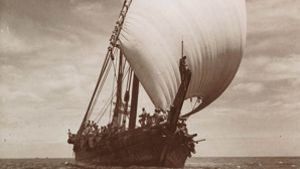
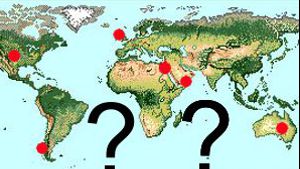
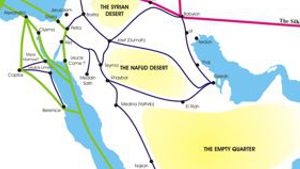
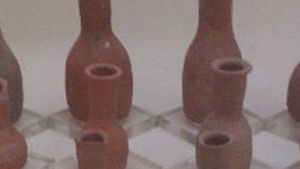
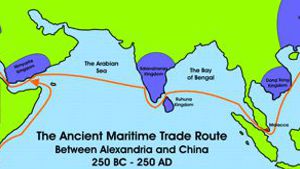





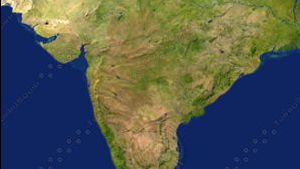
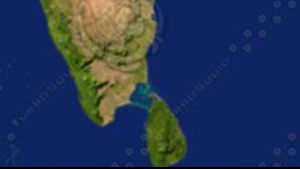

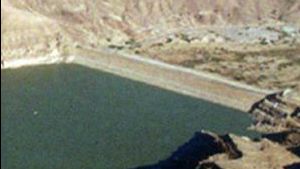
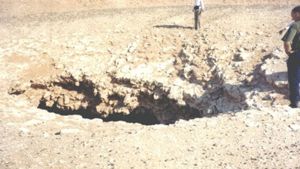

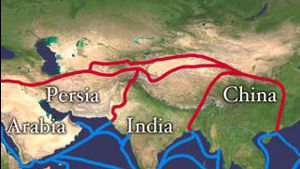
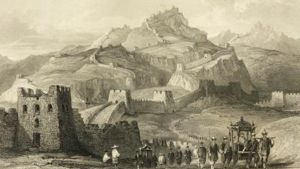
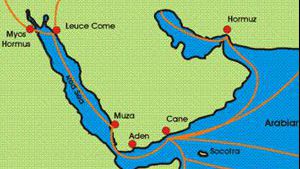
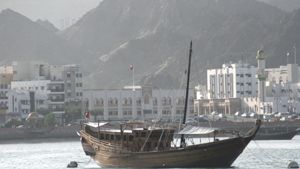
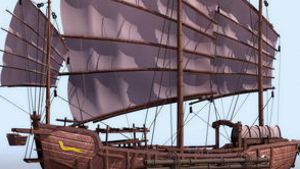
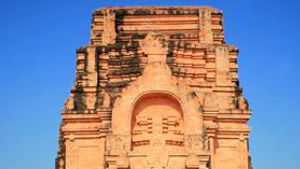

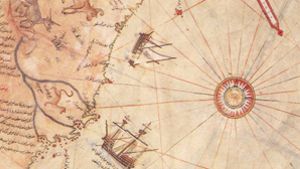
Page Discussion
Membership is required to comment. Membership is free of charge and available to everyone over the age of 16. Just click SignUp, or make a comment below. You will need a user name and a password. The system will automatically send a code to your email address. It should arrive in a few minutes. Enter the code, and you are finished.
Members who post adverts or use inappropriate language or make disrespectful comments will have their membership removed and be barred from the site. By becoming a member you agree to our Terms of Use and our Privacy, Cookies & Ad Policies. Remember that we will never, under any circumstances, sell or give your email address or private information to anyone unless required by law. Please keep your comments on topic. Thanks!